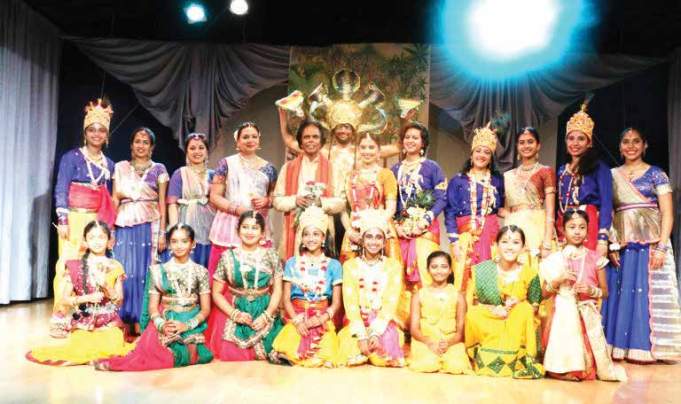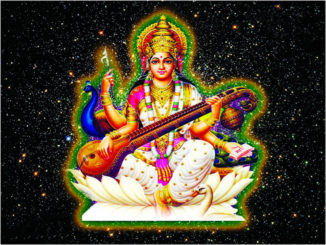
Vedanta says that Brahmn is ultimate reality. All other beings and things are unreal. But when we ask questions about the nature of Brahmn, the Upanishads describe it as neti, neti – not this, not this. Therefore, they describe the ultimate reality, Brahmn, in negative terms alone. Swami Sivananda is not satisfied with the negative description of Brahmn because it is impossible for the mind to conceive of an absolute nothing. He argues that ‘Brahmn is not void. It is not blankness or emptiness’. It is not shunyata.
Brahmn, he upholds, is paripoorna, full, because all desires melt there. Brahmn to him ‘is something, after seeing which there is nothing more to be seen, after becoming which there is nothing more to become, after knowing which there remains nothing to be known’. Brahmn is that which is allpervading, which surrounds us from all sides – around, above, and below. It is satchidananda or existence, knowledge and bliss.
It is that which has no other. It is without a second, endless, eternal, one and one alone. It is everlasting, the one continuous experiencewhole. Hence Swami Sivananda has described Brahmn in term of positive attributes. He upholds that Brahmn has six attributes: ‘jnana,divine wisdom; vairagya, dispassion; aishwarya, power; bala, strength; sri, wealth and kirti, fame.’. He is nitya, eternal; ananta, infinite and ananda, supreme bliss. He is unchanging amidst changing phenomena.
He is permanent amidst the impermanent, and imperishable amidst the perishable. He is what the Gita calls “Jyotishamapi tat jyoti, Light of all lights,”. He is the Adhisthana or support of the phenomenal world. Brahmn is the sutradhara, string-puller of all bodies of beings.
He is the antaryamin, inner ruler of all beings. He is in you and you are in Him. Each of the five primary elements is a manifestation of His qualities. Brahmn is swatantra or independent. He has satkama, good desires and satsankalpa, pure will. Since karmas are jada or insentient, on their own they cannot yield fruits, so it is Brahmn who dispenses fruits of actions of jivas. He is all-merciful; quenching the thirst of jivas.
He satiates our hunger. He dispenses justice to all. The five activities of God are: Srishti, Creation;, sthiti, preservation, samhara, destruction, tirodhana or tirobhava, veiling; and anugraha, grace, Swami Sivananda accepts that Brahmn is beyond the reach of the senses and mind that is why its existence cannot be proved by scientific experimentation.
It is purely a question of faith and refers to the intuitive side of man. However, His existence can be inferred by certain empirical facts or common experiences in daily life. One can also prove the existence of Brahmn conceptually.
One cannot think of impurity, duality, disagreement, variety and mortality without thinking of purity, oneness, agreement, unity and immortality. The possibility of the relative implies reality of the Absolute. Finally, Swami Sivananda questions an atheist who wants conclusive proof for the existence of Brahmn: ‘Can you give proof for the non-existence of Brahmn?’ He asserts that no one has succeeded in proving that Brahmn does not exist. ‘Whether the owl accepts the presence of light or not, there is always light’.
Likewise, whether you accept the existence of Brahmn or not, He always exists. Even the one who claims the non-existence of Brahmn is himself Brahmn. Likewise, the one who claims that there is only shunya, void, forgets that that the knower who knows the shunya is himself Brahmn.




Be the first to comment